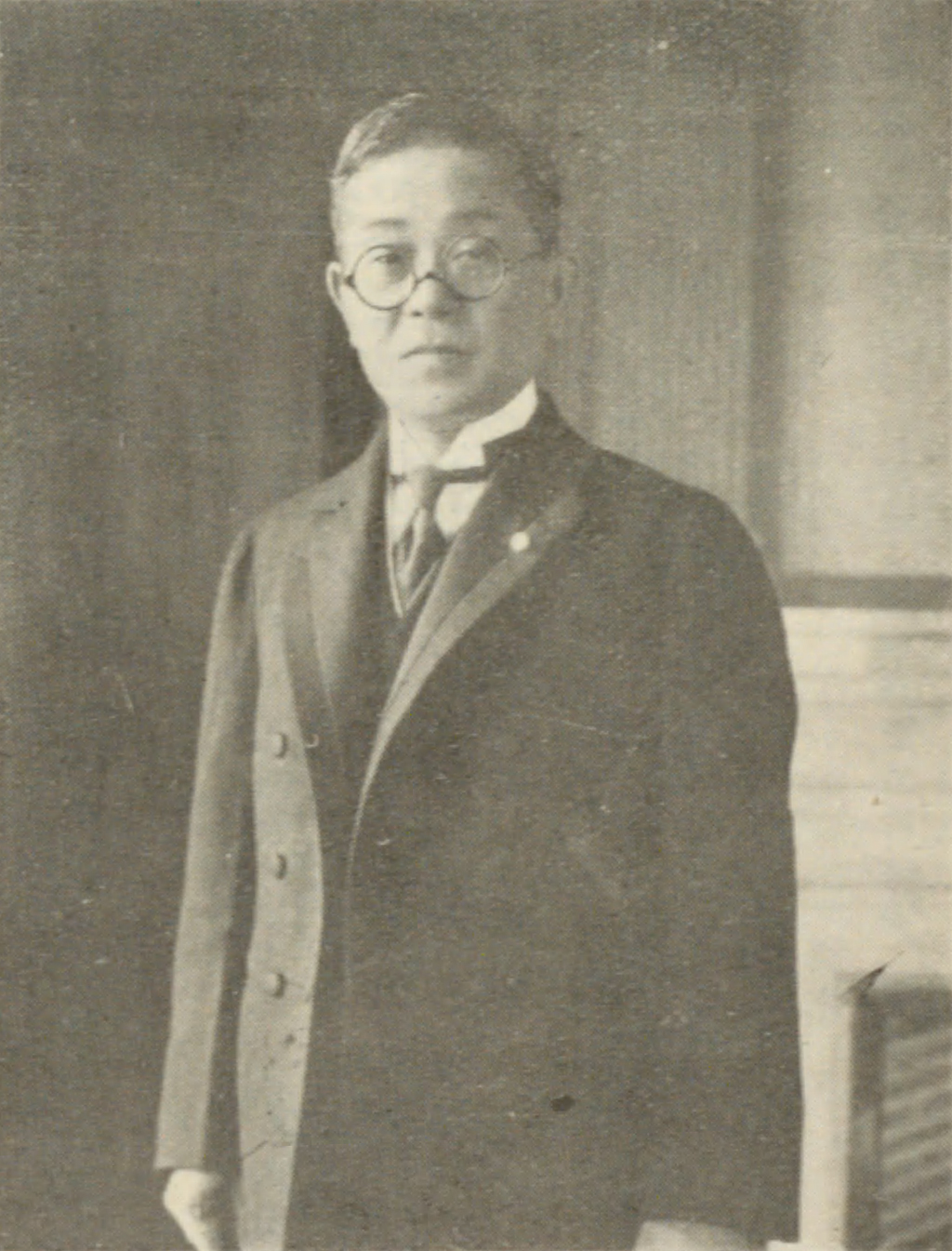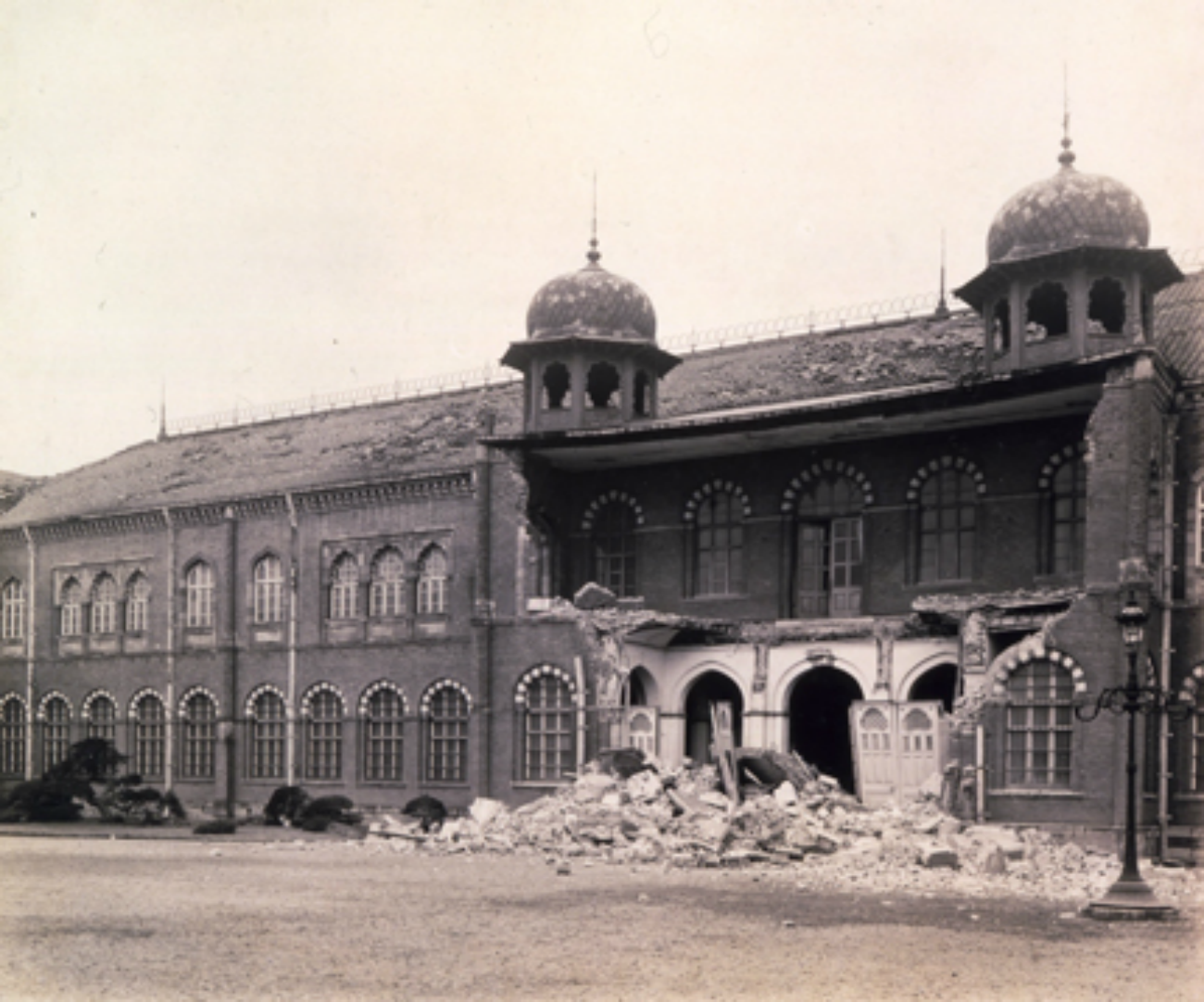|
Tokiwayama Bunko
is a Japanese foundation with an important collection of Japanese and Chinese art, in particular ceramics, calligraphic works, and paintings. Established by Tsûsai Sugawara in 1954, this includes two National Treasures, twenty-three Important Cultural Properties (six paintings, sixteen calligraphic works/old documents/classical texts, one Muromachi-period red lacquered bowl), and eighteen Important Art Objects. The foundation possesses one of the largest collections of bokuseki calligraphy, ceramics, and religious arts in Japan. Tsûsai Sugawara (1894–1981), a popular cultural figure in Japan, started collecting in 1943 and in 1954 established the Tokiwayama Bunko ("library") Foundation, named for the area of Kamakura where he had his private residence. Initially a physical gallery was opened to the public, consisting of multiple wooden buildings on Sugawara's estate, but amendments to the Law for the Protection of Cultural Properties necessitated the closure of the vu ... [...More Info...] [...Related Items...] OR: [Wikipedia] [Google] [Baidu] |
Saigū No Nyōgo
Princess Kishi (929 in poetry, 929–985 in poetry, 985, 徽子女王, also ''Yoshiko Joō'' 承香殿女御 ''Jokyōden Joō'' or 斎宮女御 ''Saigū no Nyōgo'') was a Japanese Waka (poetry), Waka poet of the middle Heian period. She is one of only five women numbered as one of the Thirty-six Poetry Immortals. As her name implies, she was a princess of the Imperial Family of Japan. She was one of Emperor Murakami's consorts, and gave birth to one daughter, ''Imperial Princess Kishi'', and a son. Through her father, Imperial Prince Shigeakira, she was the granddaughter of Emperor Daigo. Prior to becoming a consort she served as Ise Priestess, chief priestess of the Ise Grand Shrine, Ise Shrine. Many of her poems are included in the third Japanese imperial poetry anthology, Shūi Wakashū, issued in 1006. References 10th-century Japanese women writers 10th-century Japanese writers 10th-century Japanese poets Japanese women poets Saiō {{japan-poet-stub ... [...More Info...] [...Related Items...] OR: [Wikipedia] [Google] [Baidu] |
Bokuseki
''Bokuseki'' (墨跡) is a Japanese term meaning “ink trace”, and refers to a form of Japanese calligraphy (''shodō'') and more specifically a style of '' zenga'' developed by Zen monks. ''Bokuseki'' is often characterized by bold, assertive, and often abstract brush strokes meant to demonstrate the calligrapher’s pure state of mind (see ''Samadhi''). The aim in making ''Bokuseki'' is to represent one’s single-moment awareness by brushing each word or passage with a single breath, ultimately realizing Zen and manifesting one’s ''zazen'' practice into physical and artistic action. Fundamentally ''bokuseki'' is a reflection of one’s spontaneous action (see: Buddha-nature, '' katsu'') free from one’s superficial or rationally oriented mind. Gallery See also *Japanese calligraphy **'' Zenga'' **''Hitsuzendō is believed by Zen Buddhism, Zen Buddhists to be a method of achieving samādhi (Japanese: 三昧 ''sanmai''), which is a unification with the highest rea ... [...More Info...] [...Related Items...] OR: [Wikipedia] [Google] [Baidu] |
Kanazawa Bunko
, formally titled the Kanagawa Prefectural Kanazawa-Bunko Museum, is a museum located in Kanazawa Ward, Yokohama, Japan. It features a collection of traditional Japanese and Chinese art objects, many dating from the Kamakura period. Originally built as a private library, Kanazawa Bunko was one of the two most important centers of learning in medieval Japan, with Ashikaga Gakkō being the other. The library was opened in 1275 by Hōjō Sanetoki (1224–76), a grandson of Hōjō Yoshitoki, second regent of the Kamakura shogunate. The library's collection has not remained intact, although some original documents remain. The existing building, built in 1990, houses the existing collection. The art collection of the Kanazawa Bunko includes Kamakura portraits, calligraphy, Chinese and Japanese classics, Buddhist sutras, and Zen writings. It is housed in a building within the Shōmyōji temple's precincts, though in a separate building. The collection includes an eleven-headed Kannon ... [...More Info...] [...Related Items...] OR: [Wikipedia] [Google] [Baidu] |
List Of Cultural Properties Of Japan - Paintings (Kanagawa)
A list is a set of discrete items of information collected and set forth in some format for utility, entertainment, or other purposes. A list may be memorialized in any number of ways, including existing only in the mind of the list-maker, but lists are frequently written down on paper, or maintained electronically. Lists are "most frequently a tool", and "one does not ''read'' but only ''uses'' a list: one looks up the relevant information in it, but usually does not need to deal with it as a whole".Lucie Doležalová,The Potential and Limitations of Studying Lists, in Lucie Doležalová, ed., ''The Charm of a List: From the Sumerians to Computerised Data Processing'' (2009). Purpose It has been observed that, with a few exceptions, "the scholarship on lists remains fragmented". David Wallechinsky, a co-author of ''The Book of Lists'', described the attraction of lists as being "because we live in an era of overstimulation, especially in terms of information, and lists help us ... [...More Info...] [...Related Items...] OR: [Wikipedia] [Google] [Baidu] |
Nezu Museum
The , formerly known as the Nezu Institute of Fine Arts, is an art museum in the Minato, Tokyo, Minato district of Tokyo, Japan. The museum is home to the private collection of pre-modern Japanese and East Asian art assembled by Nezu Kaichirō (1860–1940). Established upon Nezu's death in 1940, the museum foundation began opening exhibitions to the public in 1941. During World War II, the museum's collection was safeguarded away from central Tokyo, avoiding the destruction suffered by the estate property during the bombing in May 1945. Exhibitions resumed after the war in 1946. Closed due to large-scale renovation and renewal starting in 2006, the museum reopened in the fall of 2009 with a brand new building designed by the Japanese architect Kengo Kuma. The museum is also famous for its garden. Drinking yuzu tea in the museum's cafe has been included as one of the best 30 Tokyo experiences in the ''Soul of Tokyo'', a 2019 travel guide book. Collections The museum houses ... [...More Info...] [...Related Items...] OR: [Wikipedia] [Google] [Baidu] |
Tokyo National Museum
The or TNM is an art museum in Ueno Park in the Taitō wards of Tokyo, ward of Tokyo, Japan. It is one of the four museums operated by the , is considered the oldest national museum and the largest art museum in Japan. The museum collects, preserves, and displays a comprehensive collection of artwork and cultural objects from Asia, with a focus on ancient and medieval Japanese art and Asian art along the Silk Road. There is also a large collection of Greco-Buddhist art. As of April 2023, the museum held approximately 120,000 Cultural Properties, including 89 National Treasure (Japan), National Treasures, 319 List of Hōryū-ji Treasures at Tokyo National Museum, Horyuji Treasures, and 649 Important Cultural Properties of Japan, Important Cultural Properties. As of the same date, the Japanese government had designated 902 works of art and crafts as National Treasures and 10,820 works of art and crafts as Important Cultural Properties, so the museum holds about 10% of the works of a ... [...More Info...] [...Related Items...] OR: [Wikipedia] [Google] [Baidu] |
Kamakura Museum Of National Treasures
The or Kamakura Museum or Kamakura National Treasure House is a museum located on the grounds of Tsurugaoka Hachiman-gū in Yukinoshita, Kamakura, Kanagawa Prefecture, Japan. The museum houses around 4800 objects from the Kamakura region including sculptures, paintings and industrial art objects. Most of these works originate from the Kamakura and Muromachi periods, spanning from the 12th to the 16th century. Some of the items were produced in China and imported to Japan. Name The term "National Treasure" in the museum's name refers to "old" National Treasures of Japan, term which denoted all the state-designated Cultural Properties of Japan before the Law for the Protection of Cultural Properties came into force on August 29, 1950. All of the old national treasures became Important Cultural Properties and some of them have been designated as (new) National Treasures since June 9, 1951. From a current perspective the name refers to a museum housing both Important Cultural Propert ... [...More Info...] [...Related Items...] OR: [Wikipedia] [Google] [Baidu] |
Kanagawa Prefecture
is a Prefectures of Japan, prefecture of Japan located in the Kantō region of Honshu. Kanagawa Prefecture is the List of Japanese prefectures by population, second-most populous prefecture of Japan at 9,221,129 (1 April 2022) and third-densest at . Its geographic area of makes it fifth-smallest. Kanagawa Prefecture borders Tokyo to the north, Yamanashi Prefecture to the northwest and Shizuoka Prefecture to the west. Yokohama is the capital and largest city of Kanagawa Prefecture and the List of cities in Japan, second-largest city in Japan, with other major cities including Kawasaki, Kanagawa, Kawasaki, Sagamihara, and Fujisawa, Kanagawa, Fujisawa. Kanagawa Prefecture is located on Japan's eastern Pacific coast on Tokyo Bay and Sagami Bay, separated by the Miura Peninsula, across from Chiba Prefecture on the Bōsō Peninsula. Kanagawa Prefecture is part of the Greater Tokyo Area, the most populous metropolitan area in the world, with Yokohama and many of its cities being ma ... [...More Info...] [...Related Items...] OR: [Wikipedia] [Google] [Baidu] |
Cultural Property (Japan)
A is administered by the Japanese government's Agency for Cultural Affairs (Ministry of Education, Culture, Sports, Science and Technology), and includes tangible properties (structures and works of art or craft); intangible properties (performing arts and craft techniques); folk properties both tangible and intangible; monuments historic, scenic and natural; cultural landscapes; and groups of traditional buildings. Buried properties and conservation techniques are also protected. Together these cultural properties are to be preserved and utilized as the heritage of the Japanese people. Not all Cultural Properties of Japan were created in Japan; some are from China, Korea or other countries. See for example the letter from Duarte de Menezez to Toyotomi Hideyoshi, pictured above, a National Treasure originating in India. In total, some 857 Important Cultural Properties are Chinese in origin, 96 from Korea, 27 from the West, and three from elsewhere. To protect Japan's cultu ... [...More Info...] [...Related Items...] OR: [Wikipedia] [Google] [Baidu] |
Muromachi Period
The , also known as the , is a division of Japanese history running from approximately 1336 to 1573. The period marks the governance of the Muromachi or Ashikaga shogunate ( or ), which was officially established in 1338 by the first Muromachi ''shōgun'', Ashikaga Takauji, two years after the brief Kenmu Restoration (1333–1336) of imperial rule was brought to a close. The period ended in 1573 when the 15th and last shogun of this line, Ashikaga Yoshiaki, was driven out of the capital in Kyoto by Oda Nobunaga. From a cultural perspective, the period can be divided into the Kitayama and Higashiyama cultures (later 15th – early 16th centuries). The early years from 1336 to 1392 of the Muromachi period are known as the or Northern and Southern Court period. This period is marked by the continued resistance of the supporters of Emperor Go-Daigo, the emperor behind the Kenmu Restoration. The Sengoku period or Warring States period, which begins in 1465, largely overlaps ... [...More Info...] [...Related Items...] OR: [Wikipedia] [Google] [Baidu] |





